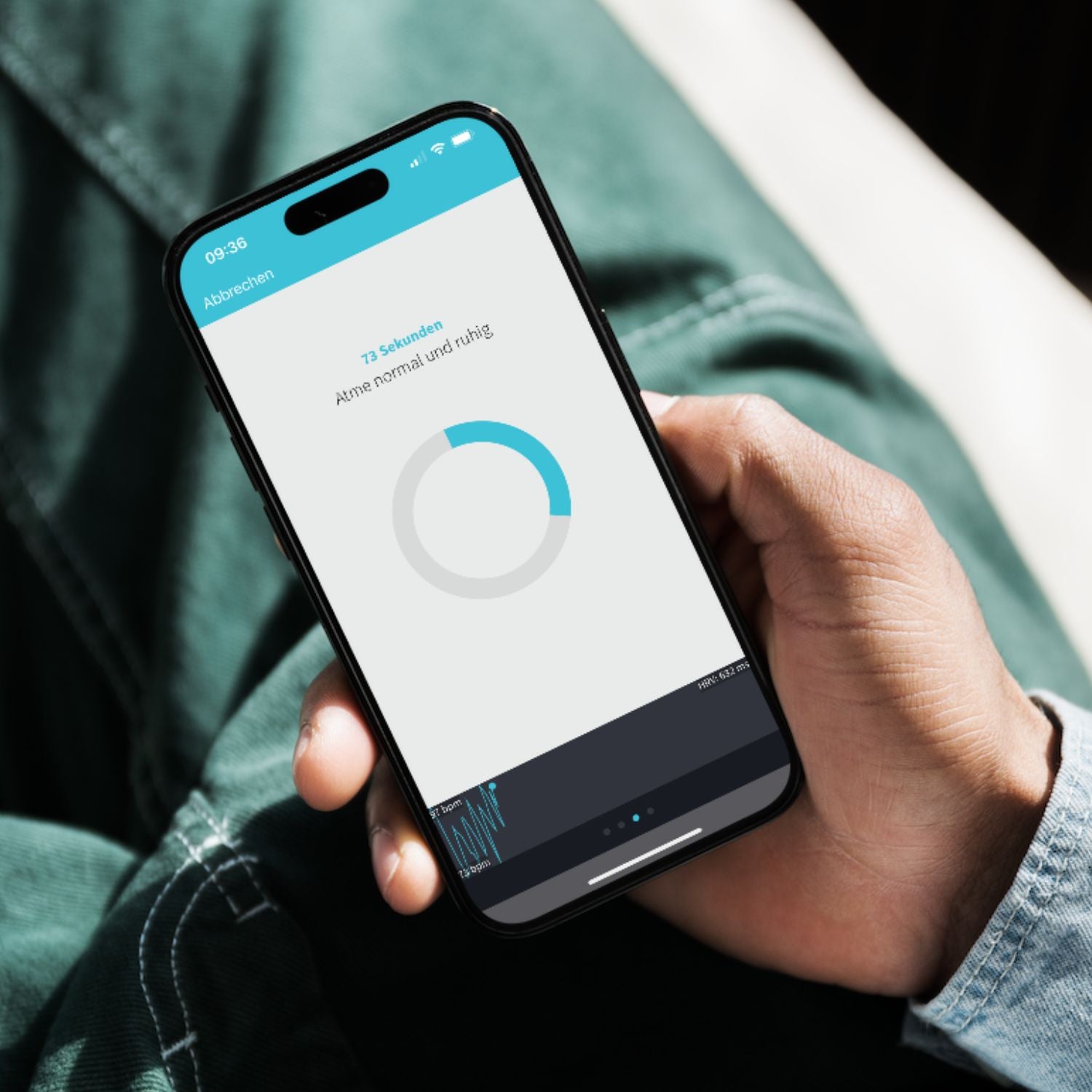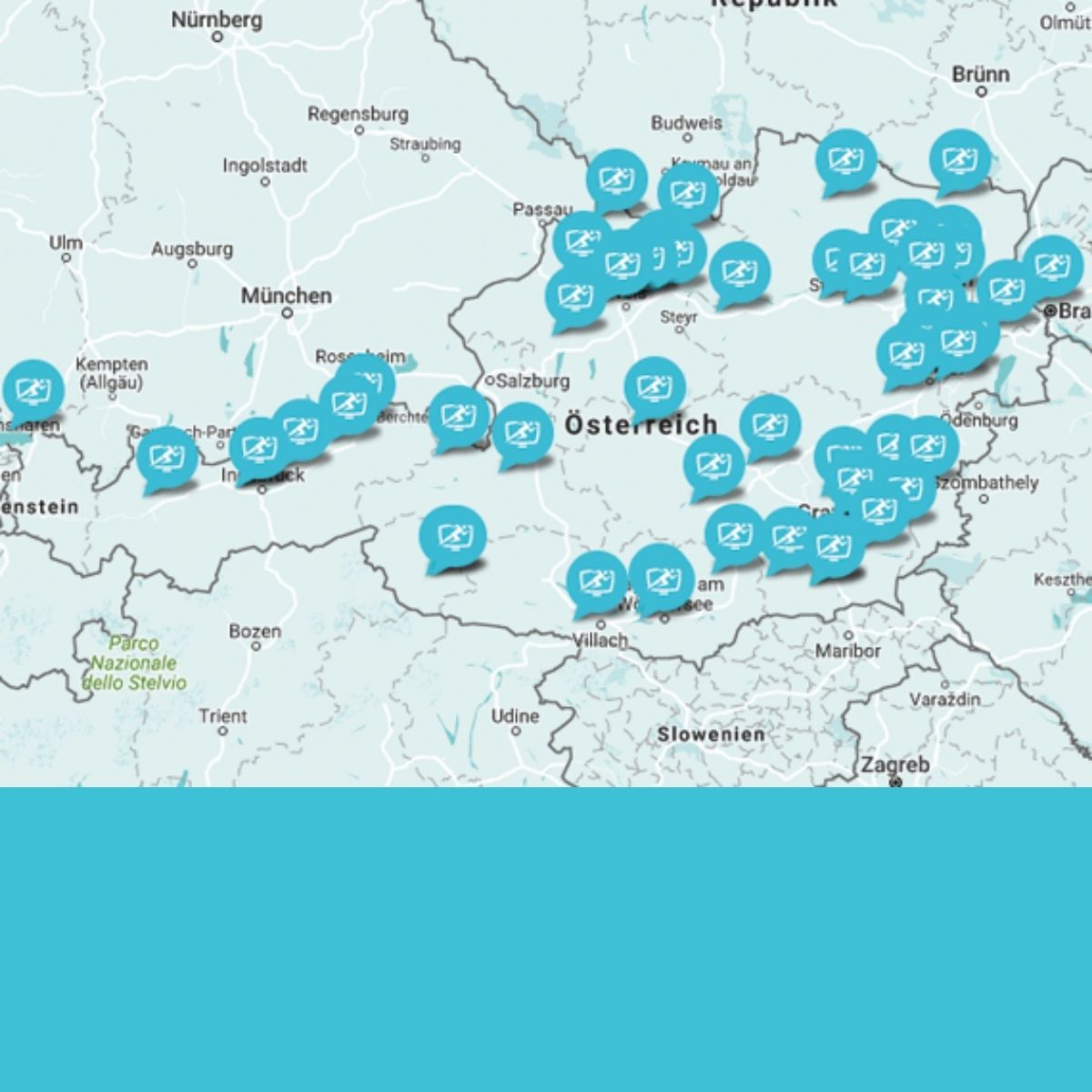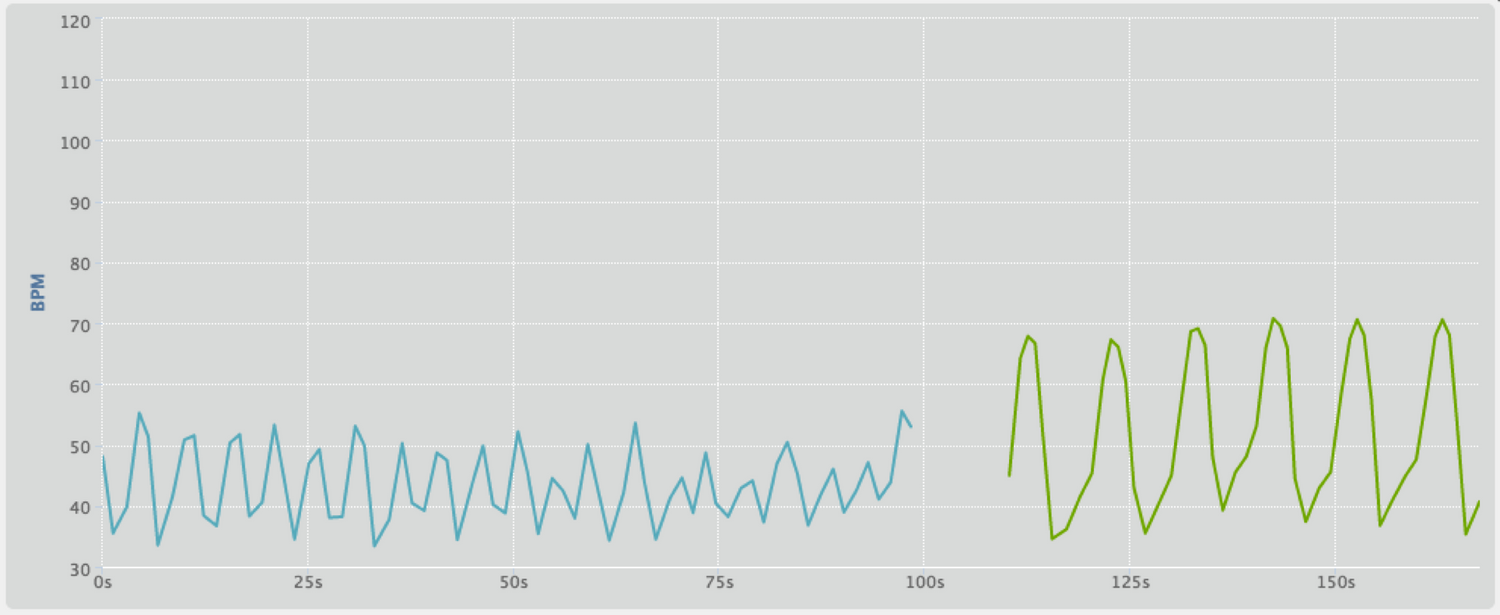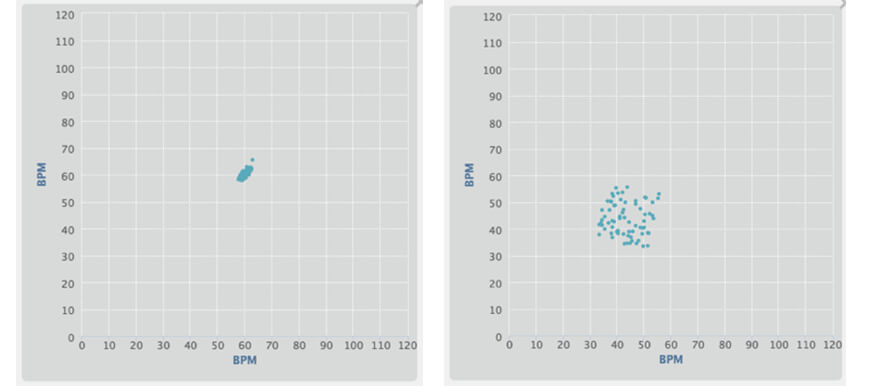Control quality easily
Once the measurement has been taken, a simple quality control can be performed in the app. Since we standardize the measurement situation (sitting, leaning, at rest) in order to omit as many influencing factors as possible from movements and changes in position (e.g. standing up, sitting down mean complex control processes that we want to switch off), we can use the app for a simple quality control: Standing up, sitting down mean complex control processes that we want to eliminate), the "basic control competence" of the organism, so to speak, remains in our measurements for evaluation. The first indications that point to an incorrect measurement are an unusually high HRV or a conspicuously high pulse. In such cases it is absolutely necessary to check the course of the measurement in the portal!
Login to the portal is done via the Vitalmonitor homepage:
https://portal01.vital-monitor.com/sign-in

After logging in, you can see additional information about the individual measurements in the right margin: History, ECG and HRV plot.
The course is the linear representation of the pulse course of a single measurement. It is divided into two parts: blue - measurement part without breathing and green - measurement part with deep breathing. Both should be stable in their pulse behavior, i.e. the imaginary center line should be parallel to the baseline. In the second measurement section (green), breathing must be clearly visible (6 distinct fluctuations).

The strength of the fluctuations in both sections also show purely visually the level of the regulatory processes to which the heartbeat is subject! Lower fluctuations mean a lower regulatory capacity and a lower HRV.

Stable conditions are also present in this example, although at a much lower level of fluctuation. If there is a deviation of the values from stable pulse conditions, then this can be caused by restlessness, stress during the measurement, movement, etc.. If this is short term (1-2x coughing or sneezing, a few extrasystoles) and then there is stability again, we automatically correct this. However, if conditions remain unstable afterwards, then this cleanup no longer works. In this case the measurement - at least if it is a morning measurement - has to be deleted. The morning measurements calibrate the system individually and the biological age is derived from the morning measurements!
Examples
Below are a few examples of progressions:
 Do not delete!!! Pulse drops slightly, but only slightly. Outlier is cleaned up.
Do not delete!!! Pulse drops slightly, but only slightly. Outlier is cleaned up.
 Conditionally usable, in case of doubt rather leave!
Conditionally usable, in case of doubt rather leave!
 Delete because breathing exercise did not work properly!
Delete because breathing exercise did not work properly!
 Delete because the pulse increases too much after coughing. Breathing exercise also not working!
Delete because the pulse increases too much after coughing. Breathing exercise also not working!
 Delete, because a too strong break in the measurement falsifies the values!
Delete, because a too strong break in the measurement falsifies the values!
 Conditionally usable, in case of doubt rather leave it!
Conditionally usable, in case of doubt rather leave it!
 No problem, small pulse fluctuations are tolerable!
No problem, small pulse fluctuations are tolerable!
 Pulse increase and too many runaways - rather delete! Breathing exercise fits
Pulse increase and too many runaways - rather delete! Breathing exercise fits
 Completely unstable and breathing exercise also incorrect - be sure to delete!
Completely unstable and breathing exercise also incorrect - be sure to delete!
A single faulty measurement does not mean a disaster for the calibration, but if several measurements are faulty, then the calibration is no longer usable! So: clean measurement is the order of the day!












Leave a comment
All comments are moderated before being published.
This site is protected by hCaptcha and the hCaptcha Privacy Policy and Terms of Service apply.